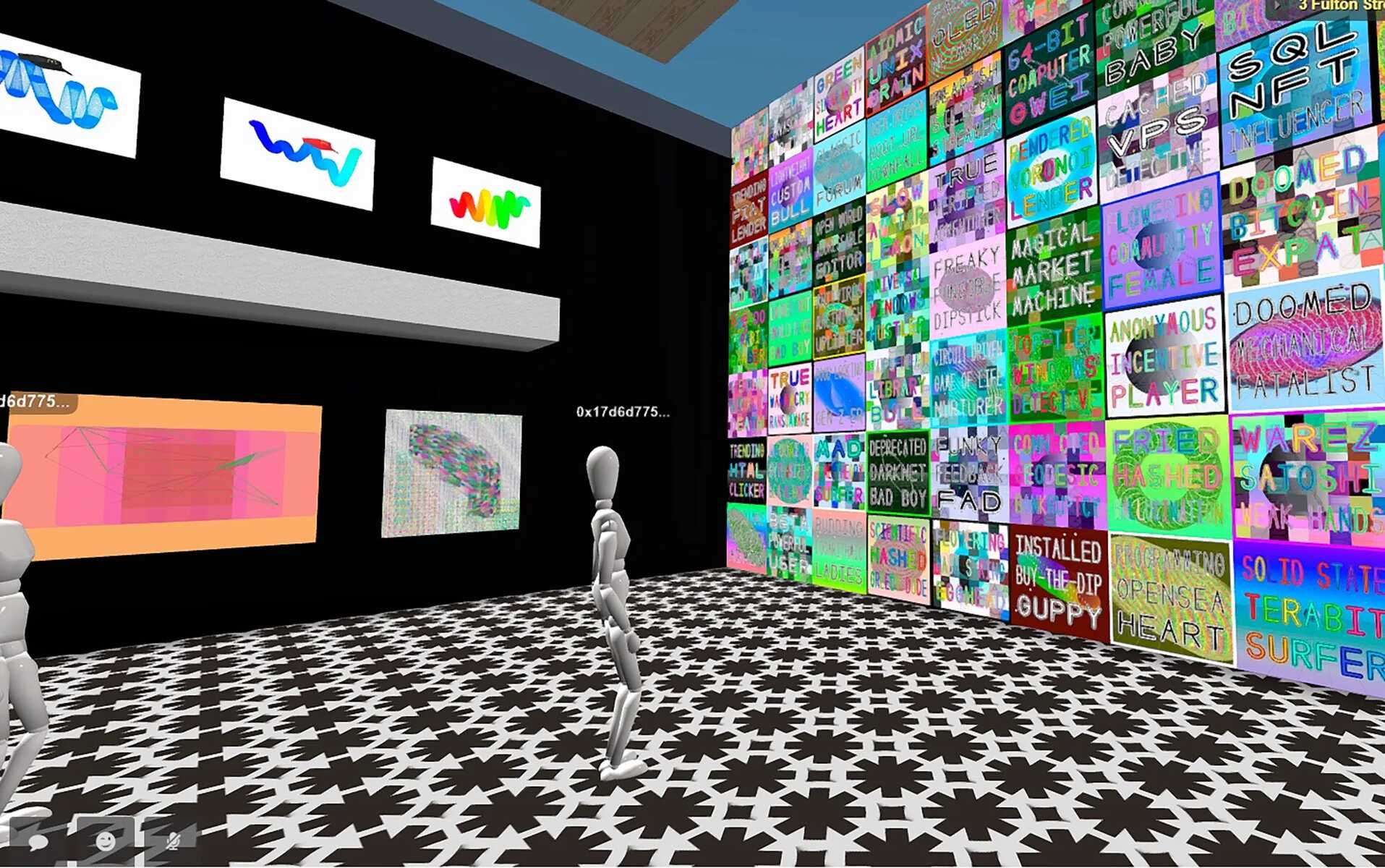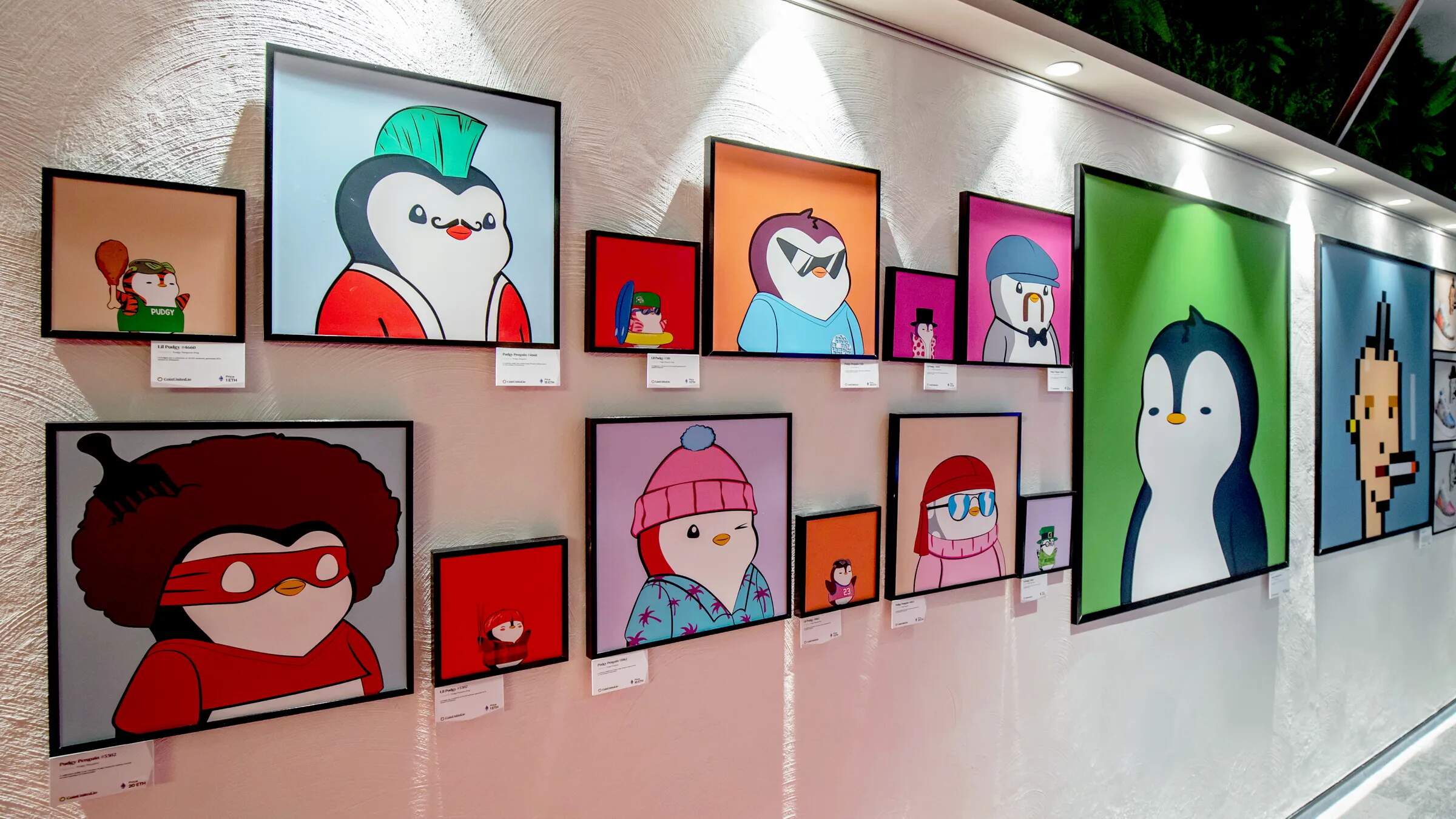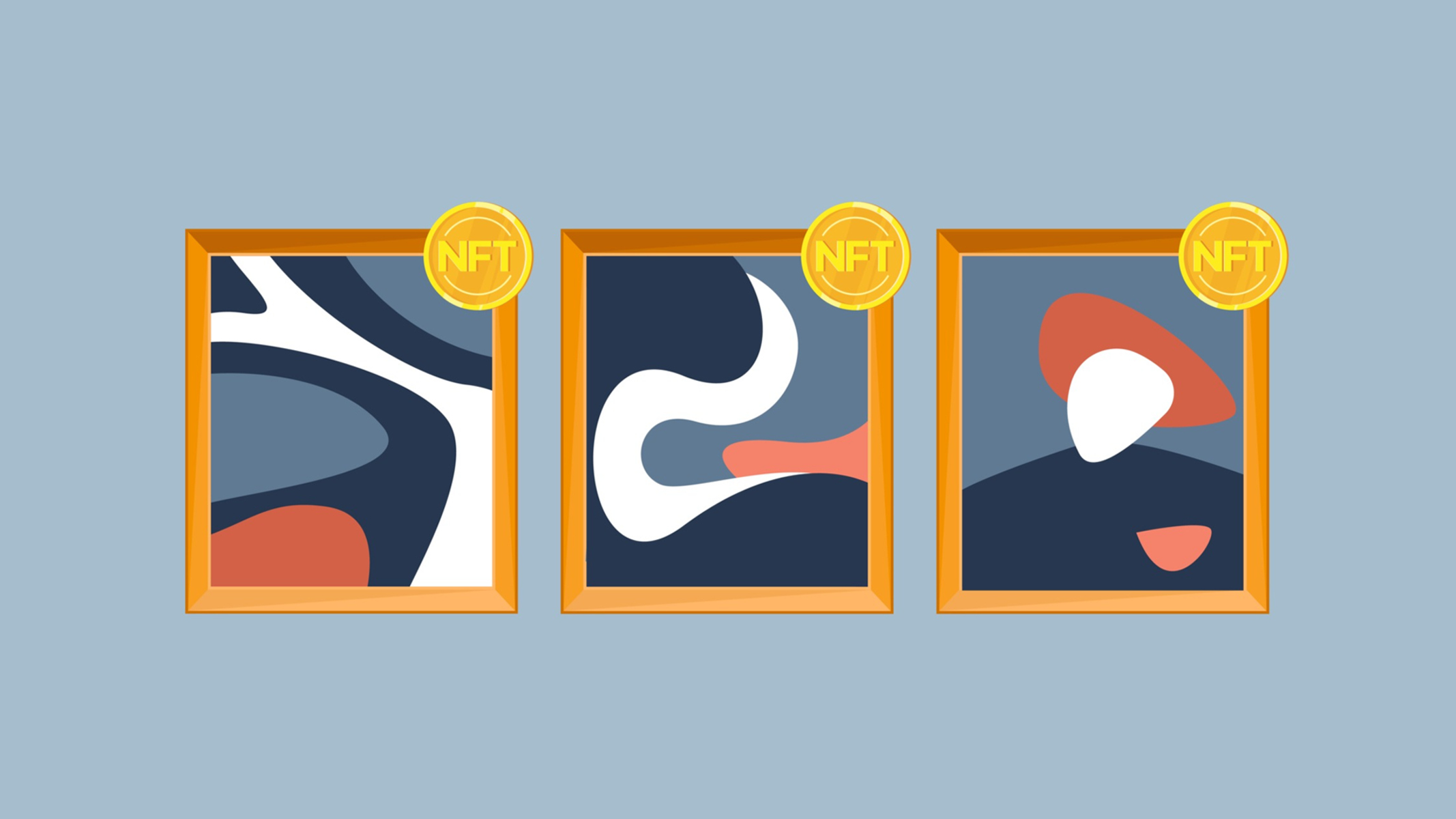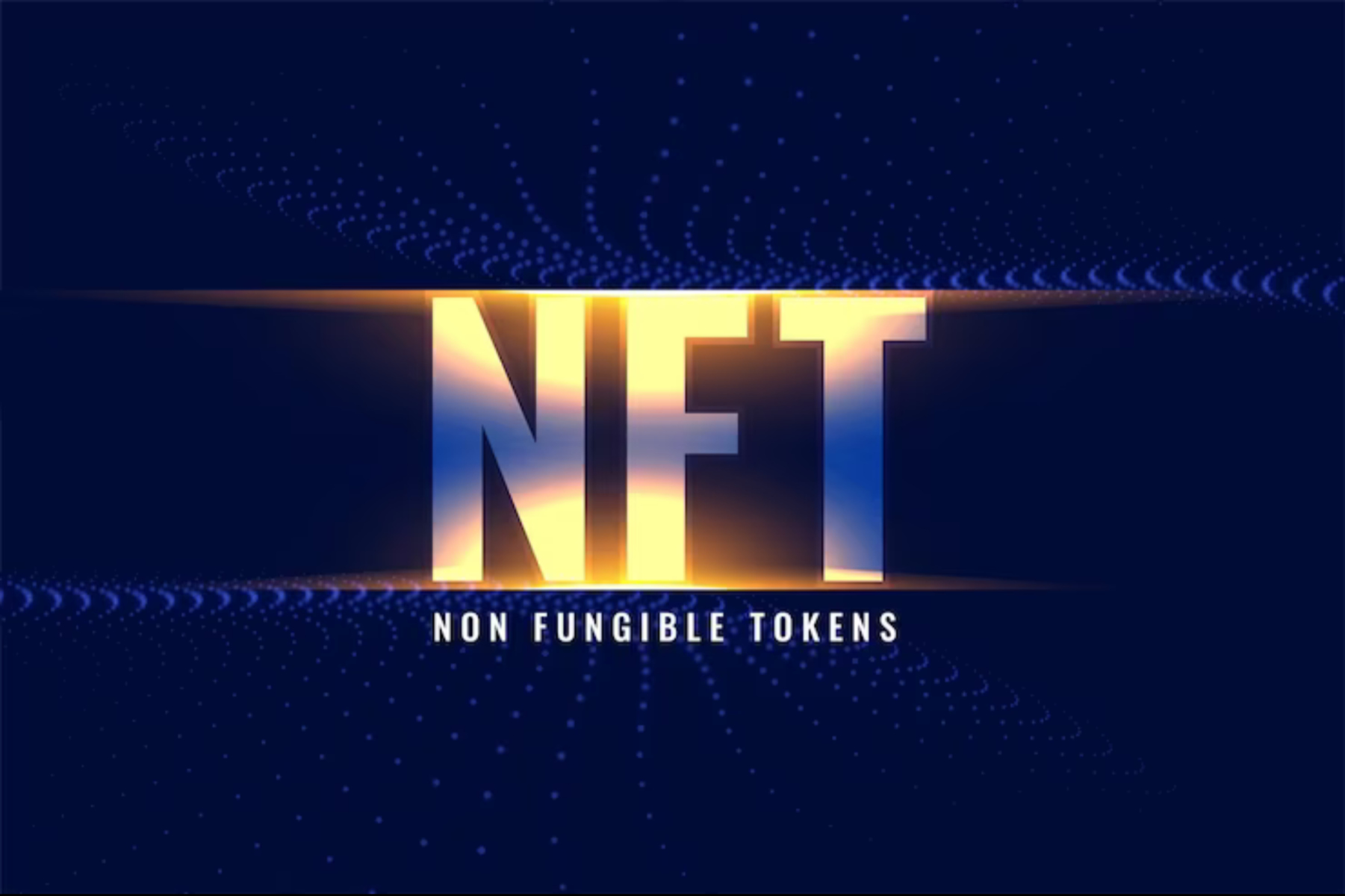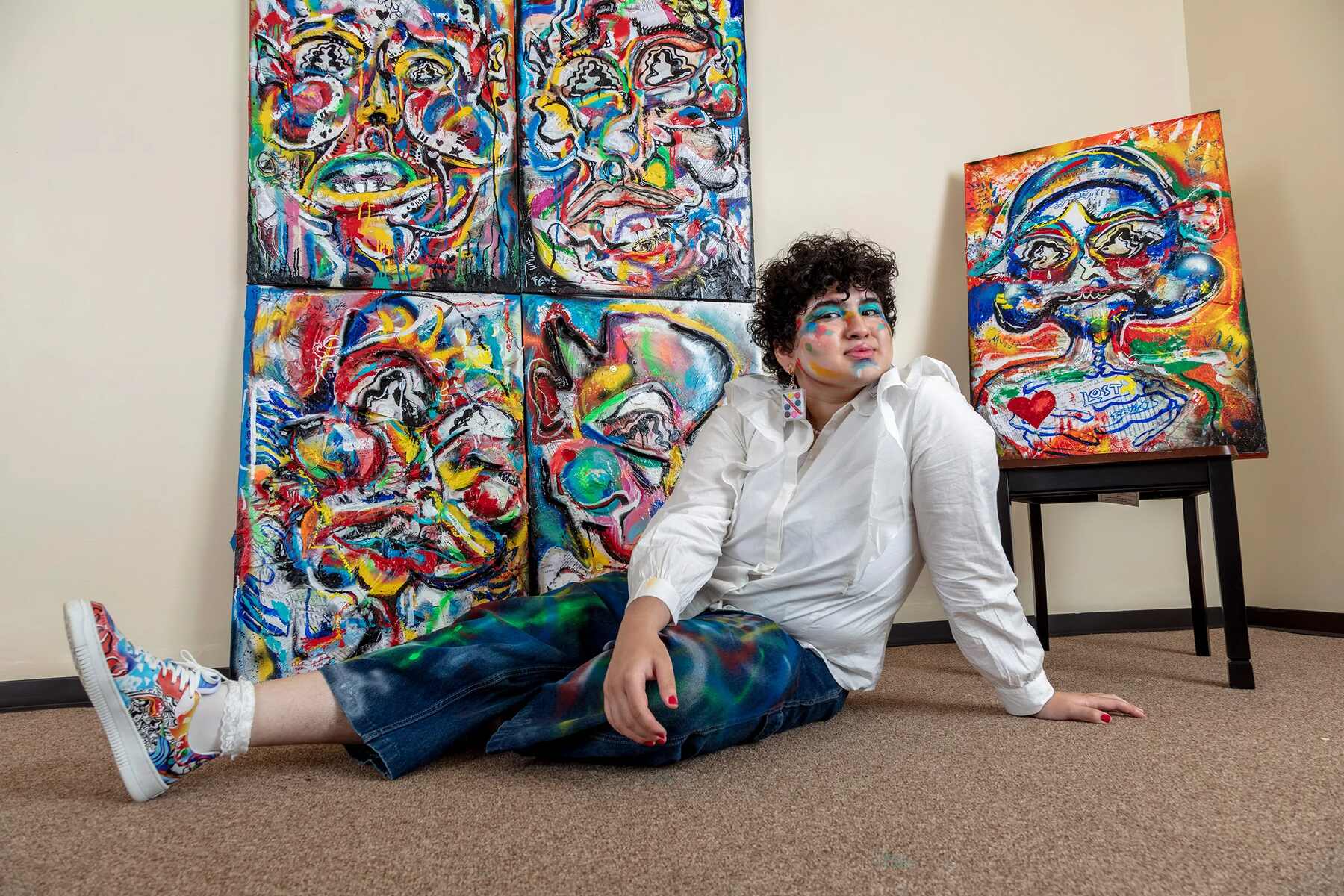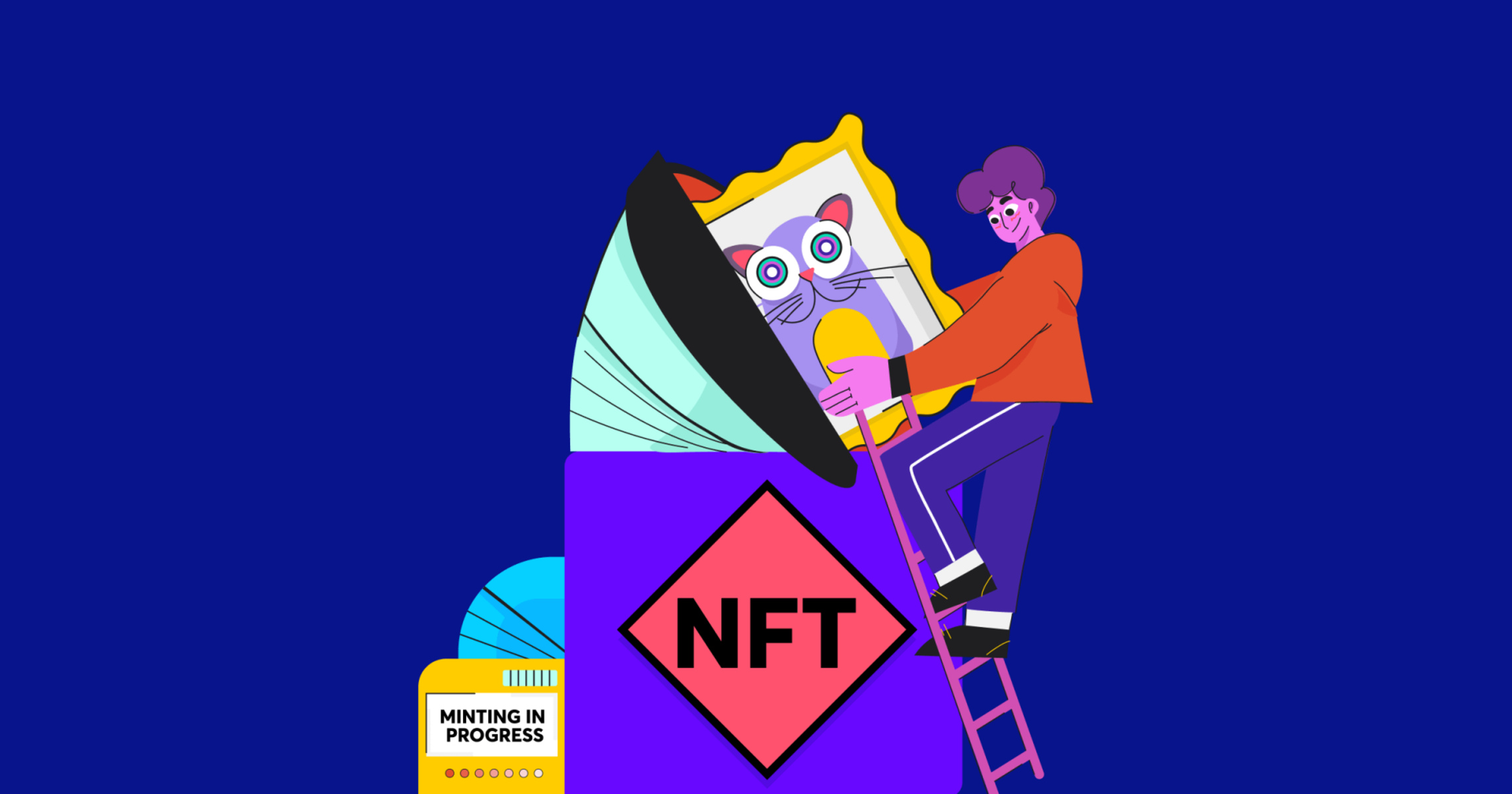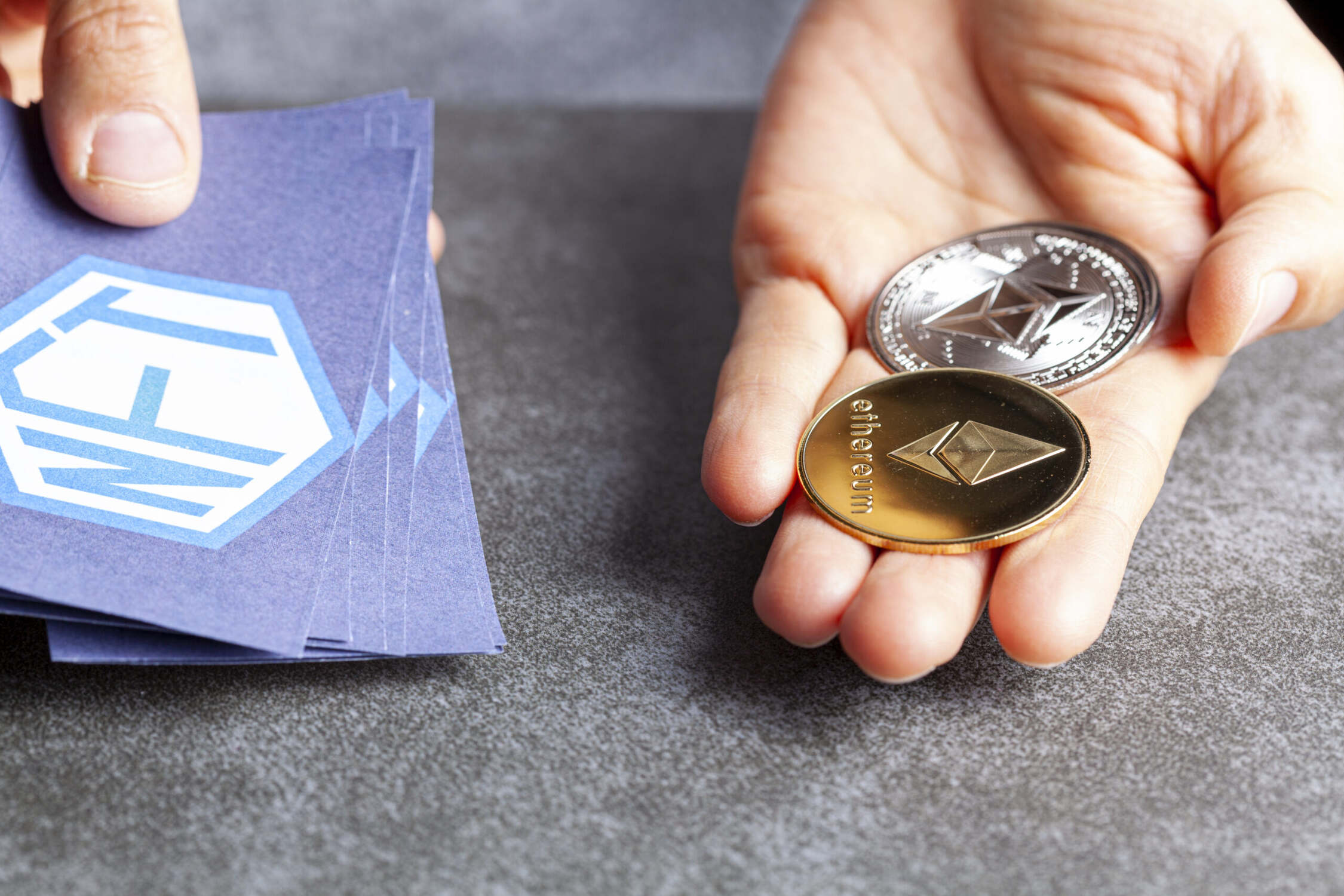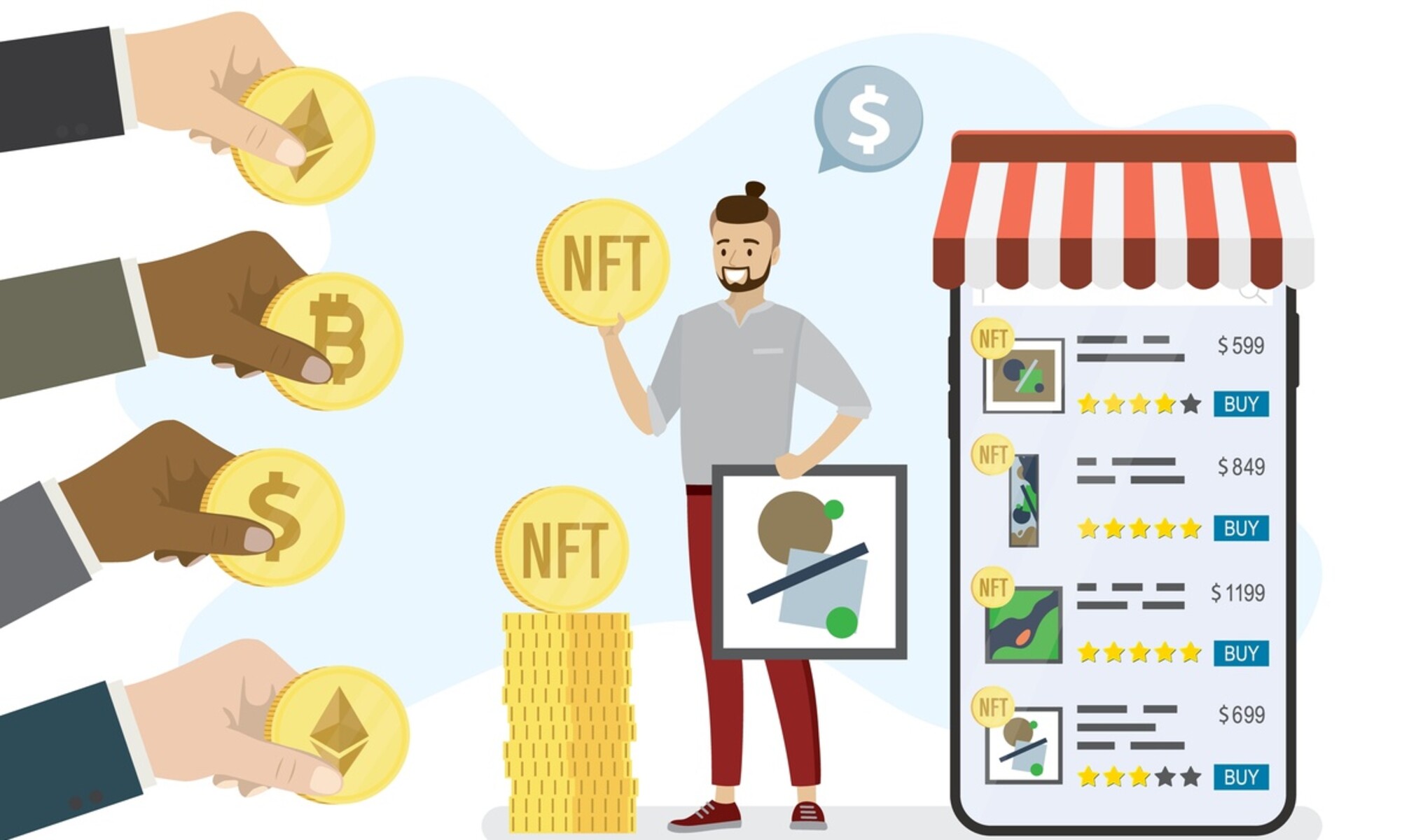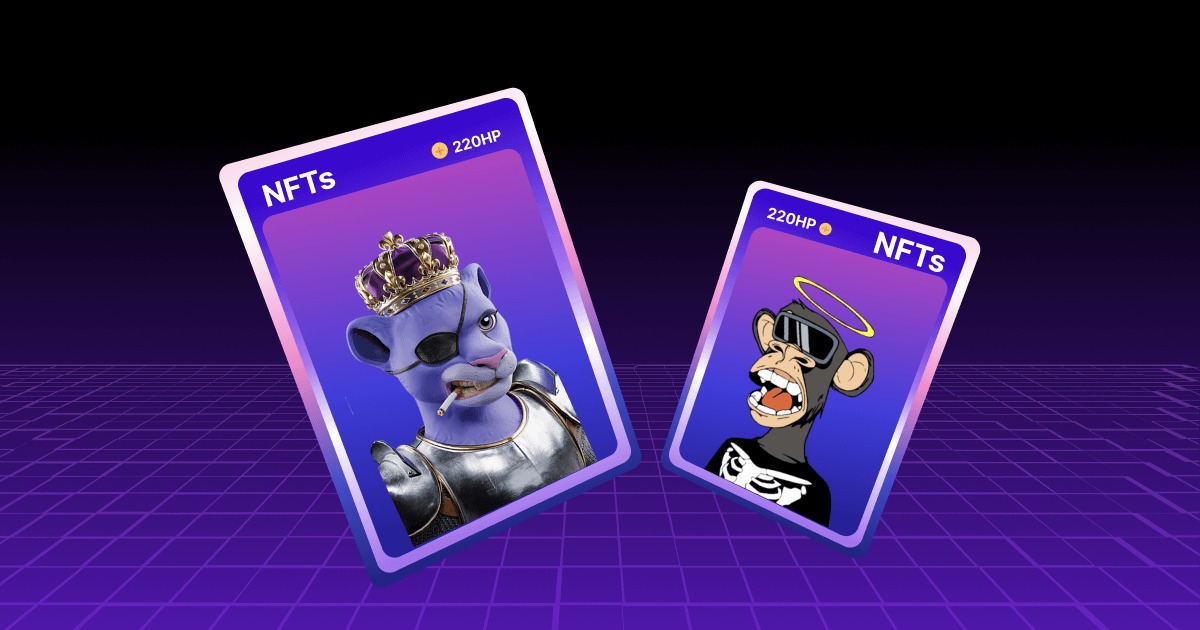Introduction
Welcome to the exciting world of selling art on NFT! If you’re an artist looking to showcase your work, reach a global audience, and potentially earn significant income, then the world of non-fungible tokens (NFTs) may be just the avenue for you.
NFTs have taken the art world by storm, providing digital artists with unprecedented opportunities to monetize their creations. Unlike traditional artwork, which can be reproduced and shared infinitely, NFTs offer a unique form of ownership and provenance through blockchain technology.
But what exactly is an NFT? NFT stands for non-fungible token, which means it is a one-of-a-kind digital asset that cannot be replicated or substituted for another. Each NFT contains a unique identifier that is recorded on a blockchain, ensuring its authenticity and ownership.
The growing popularity of NFTs has opened up new doors for artists to sell their work directly to collectors and enthusiasts around the world. This has revolutionized the art market, enabling artists to bypass traditional intermediaries and gain more control over their artistic endeavors.
In this guide, we will explore the process of selling art on NFT platforms, from creating and listing your NFTs to marketing and promoting your artwork. Whether you’re a digital artist, a traditional painter, or any other kind of visual creator, we will provide you with the essential knowledge and steps to navigate the world of NFT art sales successfully.
So, if you’re ready to dive into the exciting world of NFT art and unlock new opportunities for artistic expression, let’s get started!
What is NFT?
Before we delve deeper into selling art on NFT platforms, let’s first understand what NFTs are and how they have revolutionized the art market.
NFT stands for non-fungible token. To break it down further: non-fungible means something that cannot be exchanged on a one-to-one basis, and a token is a digital representation of ownership or a digital asset. Put simply, an NFT is a unique digital item that cannot be replicated or substituted for another.
Unlike cryptocurrencies such as Bitcoin or Ethereum, which are fungible and can be exchanged for one another, NFTs are distinct and have their own unique properties. Each NFT contains metadata that provides information about the asset it represents, such as the artist’s name, description, and a link to the artwork itself.
One of the fundamental characteristics of NFTs is their authenticity and provenance, which is achieved through blockchain technology. NFTs are typically built on blockchain networks like Ethereum, which provide a decentralized and transparent ledger for recording ownership and transaction history.
The use of blockchain technology ensures that each NFT has a verifiable and immutable record of ownership. This means that artists can prove the authenticity of their artwork, and buyers can have confidence in their ownership of a unique digital creation.
NFTs have gained significant attention in the art world because they provide new avenues for artists to monetize their creations. Unlike traditional artwork, which often relies on physical mediums and traditional galleries, NFTs offer digital artists the ability to showcase and sell their work directly to a global audience, without intermediaries.
The emergence of NFTs has sparked a wave of creativity, with artists exploring new mediums and pushing the boundaries of traditional art forms. Digital art, multimedia installations, music, videos, and even virtual real estate have all become popular forms of NFTs, demonstrating the versatility and potential of this technology.
Now that we have a better understanding of what NFTs are and their significance in the art market, let’s explore why selling art on NFT platforms can be a game-changer for artists around the world.
Why sell art on NFT?
The rise of NFTs has provided artists with a multitude of compelling reasons to explore this innovative market. Let’s take a closer look at why selling art on NFT platforms can be a game-changer for artists of all backgrounds.
1. Global Reach: NFT platforms enable artists to showcase and sell their work to a global audience. Through the power of the internet and blockchain technology, artists can reach collectors and art enthusiasts from all corners of the world, breaking down geographical barriers and expanding their visibility.
2. Direct Engagement with Buyers: Traditional art markets often involve numerous intermediaries, such as galleries, agents, and dealers. Selling art on NFT platforms allows artists to connect directly with buyers, eliminating the need for middlemen and establishing direct relationships with collectors. This not only gives artists more control over their artistic career but also allows them to receive a higher share of the artwork’s value.
3. Royalties and Residual Income: One of the groundbreaking features of NFTs is the ability to include smart contracts that automatically generate royalties for artists on secondary sales. Unlike traditional art markets, where artists typically receive no additional compensation when their work is resold, NFTs enable artists to earn ongoing income as their work appreciates in value and is bought and sold by collectors over time.
4. Immutable Ownership and Provenance: With NFTs, artists can provide verifiable proof of ownership and authenticity for their digital creations. Blockchain technology ensures that the ownership history of an NFT is recorded transparently and cannot be altered. This gives both artists and buyers confidence in the authenticity of the artwork, making NFTs a trusted platform for collecting and investing in digital art.
5. Flexibility and Creative Opportunities: NFTs have opened up new creative possibilities for artists, allowing them to explore digital mediums, interactive art, virtual reality experiences, and more. The digital nature of NFTs also provides artists with greater flexibility in distributing and sharing their work, breaking free from the constraints of physical mediums and traditional exhibition spaces.
6. Community Support: NFT platforms often foster vibrant communities of artists, collectors, and enthusiasts. Artists can receive valuable feedback, collaboration opportunities, and support from their peers and fans. This sense of community can be invaluable for emerging artists looking to establish their reputation and gain recognition in the art world.
7. Potential for Higher Earnings: NFTs have witnessed an explosion of high-value sales, with some artworks fetching millions of dollars. While not every artwork will achieve such astronomical prices, the potential for substantial earnings exists, especially if an artist’s work resonates with collectors and gains traction in the market.
In summary, selling art on NFT platforms provides artists with expanded reach, direct engagement with buyers, the opportunity for ongoing royalties, immutable ownership and provenance, creative flexibility, community support, and the potential for higher earnings. These factors make NFTs an exciting and rewarding avenue for artists to showcase their work and tap into the growing market for digital art.
How to Create an NFT
Creating an NFT may seem like a complex process, but with the right guidance, artists can easily transform their digital artwork into unique and tradable tokens. Here are the key steps to create an NFT:
1. Choose Your Artwork: Select the digital artwork that you want to turn into an NFT. This can be a digital painting, an illustration, a photograph, a GIF, or any other form of digital art.
2. Prepare Your Artwork: Make sure your artwork is in a digital format and meets the specific requirements of the NFT platform you plan to use. This may include file format, file size, and resolution specifications.
3. Join an NFT Platform: Research and join a reputable NFT platform that aligns with your goals and artistic vision. Popular platforms include Ethereum-based marketplaces like OpenSea, Rarible, and SuperRare.
4. Connect Your Wallet: Create a digital wallet compatible with the NFT platform you have chosen. This wallet will store your NFTs and enable you to buy, sell, and transfer them securely. MetaMask is a widely used wallet for Ethereum-based NFTs.
5. Mint Your NFT: The process of minting involves turning your artwork into a unique token on the blockchain. Follow the instructions provided by the NFT platform to mint your artwork. You will typically need to supply the artwork file, a title, description, and any additional metadata.
6. Set the Parameters: Determine aspects such as the total supply of your NFT (whether it’s a one-of-a-kind piece or part of a limited edition), the price you want to sell it for, and if you want to include royalties for future sales.
7. Pay Gas Fees: Gas fees are the transaction fees required to process actions on the blockchain. Be prepared to pay these fees when minting your NFT, as they can vary depending on network congestion and Ethereum gas prices.
8. Verify and Review: Once your NFT is minted, carefully review all the details to ensure accuracy and authenticity. Verify that your artwork displays correctly and that all the necessary information is included.
9. Publish and Share: Publish your NFT on the platform and share it with your audience through social media, your website, and other promotional channels. This will help create awareness and generate interest in your artwork.
Remember, the process of creating an NFT may differ slightly between platforms, so it’s essential to familiarize yourself with the specific instructions and guidelines provided by the chosen platform. Taking the time to understand the process and optimize the presentation of your artwork will greatly enhance your chances of success in the NFT marketplace.
Choosing the Right Platform
When it comes to selling your art as NFTs, selecting the right platform is crucial for reaching your target audience, optimizing your sales, and ensuring a seamless user experience. Here are some key factors to consider when choosing an NFT platform:
1. Reputation and Trustworthiness: It’s essential to choose a platform with a solid reputation and a track record of successfully facilitating NFT sales. Look for platforms that have been operating for some time and have established credibility within the NFT community.
2. User-Friendliness: Consider the platform’s user interface and overall user experience. Is it intuitive and easy to navigate? Does it offer a smooth onboarding process? Opt for a platform that simplifies the process of minting and listing your NFTs, making it accessible for artists of all technical levels.
3. Network and Exposure: Research the platform’s user base and the community it attracts. Look for platforms that have a strong network of active users, collectors, and artists. Platforms with a larger community can offer increased exposure for your artwork, potentially leading to more sales and recognition.
4. Platform Fees: Different platforms have varying fee structures associated with minting, listing, and selling NFTs. Consider the platform’s fees and how they align with your pricing strategy and profit goals. It’s essential to strike a balance between fees and the platform’s offerings and benefits.
5. NFT Standards and Customizability: Check if the platform supports the NFT standards that align with your artwork. Ethereum-based platforms often support ERC-721 and ERC-1155 standards. Additionally, consider customizability options for your NFT listings, such as the ability to add descriptions, tags, and other metadata.
6. Secondary Sales and Royalties: Some platforms offer the ability to earn royalties on secondary market transactions. This means that you can continue to earn a percentage of sales even after your initial artwork sale. If this is important to you, choose a platform that supports royalty collection mechanisms.
7. Community and Support: Look for platforms that foster an engaged and supportive community. This can provide valuable networking opportunities, collaborations, and exposure to potential buyers. Check if the platform has active social media channels, forums, or Discord communities where you can connect with other artists and collectors.
8. Security and Scalability: Consider the security measures implemented by the platform, such as secure wallet integration and robust smart contract technology. Additionally, evaluate the scalability of the platform in terms of handling high transaction volumes and maintaining a smooth user experience.
9. Platform Ecosystem: Some platforms offer additional features and services to enhance your NFT experience. This may include built-in social features, curation programs, or exclusive partnerships. Evaluate whether these additional offerings align with your goals and contribute to the overall value of the platform.
Take the time to research and compare different NFT platforms based on these factors to find the one that best aligns with your needs and artistic vision. It’s also worth considering using multiple platforms simultaneously to maximize your reach and exposure within the NFT community.
Setting Up Your NFT Listing
Once you’ve chosen the right NFT platform to showcase and sell your artwork, the next step is to set up your NFT listing. A well-optimized listing can attract potential buyers and increase your chances of a successful sale. Here are the key steps to set up your NFT listing:
1. Upload Your Artwork: Begin by uploading the digital file of your artwork to the platform. Ensure that the file meets the specified format, size, and resolution requirements. High-quality visuals are crucial to showcase your artwork effectively.
2. Title and Description: Craft a compelling title and detailed description for your NFT. The title should be concise and attention-grabbing, while the description should provide additional information about the artwork, including its inspiration, technique, or message. Including keywords relevant to your artwork can also help with discoverability.
3. Add Metadata: Platforms usually allow you to add metadata to your NFT, including information like the artist’s name, year of creation, and edition number (if applicable). This metadata helps buyers understand the background and authenticity of the artwork.
4. Set a Price: Determine the price you want to sell your NFT for. Research similar artworks on the platform to get an idea of pricing trends. Consider factors such as the uniqueness of your artwork, your reputation as an artist, and current market demand. You can choose to set a fixed price or enable bidding options.
5. Editions and Rarity: If you’re creating a limited edition series, clearly indicate the number of editions available and whether it’s a numbered or unlimited edition. Highlighting the rarity of your artwork can increase its desirability and value.
6. Set Royalty and Secondary Sales: Determine whether you want to include a royalty fee for yourself on future sales of your NFT. This allows you to earn a percentage each time your work is resold on the platform. Consider the percentage that is fair to you while still enticing potential buyers.
7. Select Display Options: Consider how you want your artwork to be displayed on the platform. Determine whether you want the image to be presented in full, cropped, or in a specific layout. You might also have the option to showcase additional images or videos of your artwork to provide a more comprehensive view.
8. Promote Your Listing: Once your NFT listing is live, it’s important to promote it extensively. Leverage your social media channels, newsletter, website, and any other relevant platforms to spread the word. Engage with your audience, share the story behind your artwork, and create anticipation.
9. Engage with the Community: Participate in the community of the NFT platform, engage with other artists, collectors, and enthusiasts. Comment on other artworks, attend virtual events, and build connections. Collaborations or shout-outs from influential members of the community can help boost your visibility and increase the chances of a sale.
10. Monitor and Adjust: Keep track of your listing’s performance, including views and bids. Analyze what strategies are working and make any necessary adjustments to your listing or promotional efforts. Continuous monitoring and optimization can lead to increased visibility and better outcomes.
By following these steps and paying attention to the details, you can set up a compelling NFT listing that showcases your artwork effectively and attracts potential buyers within the NFT community.
Marketing and Promoting Your NFT
Marketing and promotion play a crucial role in gaining visibility and attracting potential buyers to your NFT listing. To maximize the reach and impact of your artwork, consider the following strategies:
1. Harness the Power of Social Media: Leverage popular social media platforms like Twitter, Instagram, and TikTok to showcase your artwork and engage with your audience. Share captivating visuals, behind-the-scenes insights, and the story behind your artwork. Use relevant hashtags and engage with art communities to expand your reach.
2. Collaborate with Influencers: Seek collaborations with influencers or artists with a significant following in the NFT community. Collaborative projects or shout-outs can expose your work to a broader audience and increase the chances of attracting potential buyers. Look for influencers whose style or interests align with your artwork.
3. Engage in Art Communities and Forums: Join online art communities, forums, and Discord channels where artists and collectors gather. Participate in discussions, share your knowledge and insights, and offer constructive feedback. By being an active and respected member, you can build relationships, gain visibility, and attract potential buyers.
4. Establish Your Digital Presence: Create a website or portfolio to showcase your artwork and link it to your NFT listing. Your website can serve as a centralized hub for your art, artist statement, exhibition history, and contact information. Consider optimizing your website for search engines to enhance discoverability.
5. Explore NFT-Specific Platforms and Marketplaces: Promote your NFT listing on specialized NFT platforms and marketplaces beyond the platform where you listed it. Platforms like Foundation, Nifty Gateway, and KnownOrigin have their own communities and audiences that may be interested in your artwork.
6. Tap into Existing Fanbase: If you already have a following as an artist, leverage your existing fanbase by informing them about your NFT venture. Use your mailing list, newsletter, or Patreon to update your followers about new releases, exclusive drops, or upcoming auctions. Your existing fans can be your strongest advocates and potential buyers.
7. Collaborate with Cryptocurrency and NFT Projects: Engage with cryptocurrency or NFT projects that align with your artistic style or themes. Collaborative projects or integrations can introduce your artwork to new audiences and provide unique selling opportunities. Consider exploring partnerships with platforms or projects that encourage artistic innovation.
8. Offer Exclusive Benefits or Rewards: Provide incentives to potential buyers, such as bonus artwork or exclusive access to future drops, for purchasing your NFT. Limited-time offers or early-bird discounts can create a sense of urgency and exclusivity.
9. Engage with the Press and Media: Reach out to art publications, bloggers, and journalists who cover the world of NFTs. Offer them insights into your artistic journey, your motivations, and the story behind your artwork. Press coverage can provide valuable exposure and validation for your NFTs.
10. Continuously Evolve and Experiment: Stay up to date with emerging trends, platforms, and marketing strategies within the NFT space. Experiment with different approaches, engage with your audience for feedback, and adapt your marketing strategies accordingly. The NFT market is dynamic, so it’s essential to stay agile and adaptable.
By implementing these marketing and promotion strategies, you can increase the visibility of your NFT artwork, build a dedicated following, and attract potential buyers who appreciate your artistic creations.
Navigating Royalties and Secondary Sales
One of the unique features of NFTs is the ability to earn royalties on secondary sales, allowing artists to continue benefiting financially from the appreciation of their artwork. Understanding how royalties work and navigating secondary sales is essential for artists selling NFTs. Here’s what you need to know:
1. Royalty Collection Mechanisms: Some NFT platforms automatically enforce royalty payments through smart contracts. When your artwork is resold on the platform, a percentage of the sale price is automatically transferred to you as the original artist. Familiarize yourself with the royalty collection mechanism of the platform you’re using.
2. Setting Royalty Percentage: Decide on a fair and reasonable royalty percentage that aligns with the platform’s guidelines and your own artistic goals. Royalties typically range from 2% to 10% of the resale price. Consider the market norms, your reputation as an artist, and the perceived value of your artwork when determining the royalty percentage.
3. Secondary Sale Listing: When your artwork is resold on the platform, it will appear as a secondary sale listing. The listing will showcase the new sale price, the buyer, and the percentage of the royalty that will be distributed to you. Secondary sales provide an opportunity to earn ongoing income even after the initial sale of your NFT.
4. Benefits of Royalties: Royalties provide artists with several benefits. First, they incentivize collectors to invest in your artwork, as they know that future resale profits will be shared with you. Second, royalties create a direct and ongoing revenue stream for artists, allowing them to earn income from the appreciation of their artwork over time.
5. International Royalty Considerations: International royalties can be complex, as each country may have its own laws and regulations regarding intellectual property rights and royalty collection. Research and consult with legal professionals to ensure compliance with international laws, especially if your artwork attracts global buyers and resales.
6. Education and Awareness: Some collectors may not fully understand the concept of royalties or how they benefit artists. Consider including information about royalties in your NFT listings and social media posts. Educating buyers about the importance of supporting artists through royalty payments can help foster a greater appreciation for artists’ work and the NFT ecosystem as a whole.
7. Platforms and Royalty Models: Different NFT platforms may have varying royalty models. Some platforms may offer fixed royalty percentages, while others may allow artists to customize royalty percentages for each individual artwork. Research and choose platforms that align with your preferred royalty structure and enable you to earn a fair share from secondary sales.
8. Staying Informed: The NFT space is evolving rapidly, and new developments in royalty structures and regulations may arise. Stay informed about any changes in royalty policies and legal requirements. Follow industry news, join artist communities, and engage with platforms and collectors to stay updated on the latest developments in royalties and secondary sales.
By understanding royalties, advocating for their inclusion, and staying informed about the evolving landscape, artists can maximize their earning potential and continue to benefit from the long-term value and success of their NFT artwork.
Price Your NFT Artwork
Determining the appropriate price for your NFT artwork is a critical step in maximizing your chances of a successful sale. Setting a price that aligns with the value of your artwork, the current market trends, and your target audience’s purchasing power can greatly impact its marketability. Here are some considerations when pricing your NFT artwork:
1. Artistic Value: Assess the artistic value of your artwork based on its creativity, originality, technical skill, and emotional impact. Consider the time, effort, and artistic expertise invested in creating the piece. Artistic value plays a significant role in determining the price of an artwork, regardless of the medium.
2. Market Research: Conduct thorough market research to understand the pricing trends and ranges for similar artworks within the NFT market. Explore platforms, forums, and online marketplaces to gauge the prices of artworks that are comparable in terms of concept, medium, style, and artist reputation.
3. Artist Reputation and Recognition: Consider your reputation and track record as an artist. If you have an established following, awards, or recognition in the art world, it may justify a higher price point. However, if you are a relatively unknown or emerging artist, it’s important to balance aspirations for profit with attracting potential buyers.
4. Rarity and Exclusivity: If your NFT artwork is part of a limited edition or one-of-a-kind series, consider the rarity and exclusivity factor when pricing. Limited edition artworks often have higher perceived value due to their scarcity, and collectors may be willing to pay more for them.
5. Collectors’ Demand and Market Interest: Assess the demand for artworks within your niche or genre. If your artwork aligns with current trends or popular themes, it may be more desirable to collectors, potentially justifying a higher price. Stay attuned to the interests and preferences expressed by your target audience.
6. Emotional Connection and Storytelling: Highlight the narrative or story behind your artwork. Communicate how the piece relates to your artistic vision, personal experiences, or current social and cultural contexts. A compelling story can create an emotional connection with potential buyers and potentially influence their willingness to pay a higher price.
7. Production Costs and Fees: Consider the costs incurred in creating your artwork, including materials, equipment, and any outsourcing involved. Also, account for the platform fees, transaction costs, and gas fees associated with minting and selling your NFT. Ensure that your artwork’s price covers these expenses while also allowing for a reasonable profit.
8. Earning Potential and Future Resale Value: Think about the long-term earning potential of your artwork. If you anticipate your career evolving or foresee your artwork gaining value over time, you may opt for a lower initial price to attract buyers and potentially profit from future resale or appreciation.
9. Flexibility and Testing: Consider starting with competitive pricing or even experimenting with auctions or bidding mechanisms to test the market’s response to your artwork. Adjust your pricing strategy based on buyer feedback, demand, and the overall success of your NFT sales.
10. Evolving Market Dynamics: Keep in mind that the NFT market is dynamic and evolving rapidly. Regularly reassess your pricing strategy to stay aligned with market trends, shifts in demand, and changes in the wider art and crypto landscape.
By carefully considering these factors and finding the right balance between artistic value, market research, and strategic pricing, you can position your NFT artwork competitively to attract interested buyers while also reflecting the worth of your creative talent and dedication.
Maintaining Your NFT Portfolio
Building and maintaining a successful NFT portfolio requires ongoing effort and strategic management. By actively managing your portfolio, you can maximize its value, adapt to changing market trends, and improve your long-term prospects as an NFT artist. Here are some key steps to maintain a thriving NFT portfolio:
1. Regularly Evaluate and Update: Periodically review your portfolio to assess its performance, identify underperforming pieces, and make necessary updates. Remove any artworks that no longer align with your artistic direction or no longer resonate with your audience. Continuously strive for quality and relevance in your portfolio.
2. Engage with Your Audience: Cultivate a relationship with your collectors and community. Engage with your audience on social media, respond to comments and inquiries, and provide updates about your artistic journey. Nurture connections with your collectors to build loyalty and encourage repeat purchases.
3. Create New Artwork and Releases: Keep your portfolio fresh by regularly creating and releasing new artworks. Continuously challenge yourself, experiment with new concepts, and explore different artistic styles or mediums. New releases can generate excitement, attract new collectors, and keep your existing audience engaged.
4. Take Advantage of Platform Features: Stay up-to-date with the features and tools offered by your chosen NFT platform. Utilize features like auctions, bidding mechanisms, and collaboration options to showcase your artwork in unique ways and reach potential buyers. Experiment with platform-specific promotions and events to gain additional exposure.
5. Track Market Trends and Demands: Keep a close eye on market trends, emerging themes, and buyer demands within the NFT space. Stay informed about new projects, collaborations, or celebrity endorsements that might impact the market. Adapt your portfolio to align with current trends and cater to the evolving interests of collectors.
6. Participate in Virtual Exhibitions and Events: Explore opportunities to participate in virtual exhibitions, art festivals, and NFT-related events. These events provide exposure to a wider audience, introduce your artwork to potential buyers, and allow you to connect with fellow artists and industry professionals.
7. Continual Learning and Networking: Stay engaged with the NFT community by learning from other artists, attending webinars and workshops, and participating in artist forums. Networking with other artists, collectors, and influencers can provide valuable insights, collaborations, and potential opportunities for growth.
8. Diversify Your Offerings: Consider offering different types of NFTs, such as limited editions, one-of-a-kind pieces, or even collections. Diversifying your offerings can attract a broader range of collectors and cater to different budget levels, expanding your potential buyer base.
9. Balance Between Quality and Quantity: While it’s important to regularly produce new artworks, strive for a balance between quality and quantity. Prioritize the quality of your artwork to maintain the value and reputation of your portfolio. Collectors appreciate uniqueness, meticulous craftsmanship, and a strong artistic vision.
10. Stay Resilient and Patient: Building a successful NFT portfolio takes time and persistence. Be patient with the ups and downs of the market, and stay resilient in the face of challenges. Focus on improving your artistic skills, refining your portfolio, and nurturing relationships with your audience and collectors.
By actively maintaining your NFT portfolio and staying attuned to market dynamics, you can create a thriving and continuously evolving collection that resonates with collectors and contributes to your long-term success as an NFT artist.
Conclusion
Entering the world of selling art on NFT platforms opens up new and exciting opportunities for artists to showcase their talents, reach a global audience, and earn income like never before. NFTs have revolutionized the art market by providing artists with unique ownership and provenance through blockchain technology.
In this guide, we covered the essential steps to successfully sell art as NFTs. From understanding what NFTs are and their significance in the art world to choosing the right platform, setting up NFT listings, marketing and promoting your artwork, navigating royalties and secondary sales, pricing your NFTs, and maintaining your portfolio – each step plays a crucial role in your journey as an NFT artist.
Remember to carefully consider the factors that influence your pricing strategy, including the artistic value, market trends, rarity, and your own reputation. Continuously engage with your audience, explore new artwork creations, and adapt to emerging market trends to maintain a thriving portfolio.
As the NFT space evolves, it’s essential to stay informed, engage with the community, and continually refine your artistic and marketing strategies. Be open to learning, networking with fellow artists and collectors, and embracing the dynamic nature of the NFT market.
By leveraging the power of social media, collaborating with influencers, participating in art communities, and staying engaged with NFT platforms, you can maximize the visibility and profitability of your NFT artwork. Stay patient, resilient, and passionate about your craft, and your journey as an NFT artist will continue to flourish.







